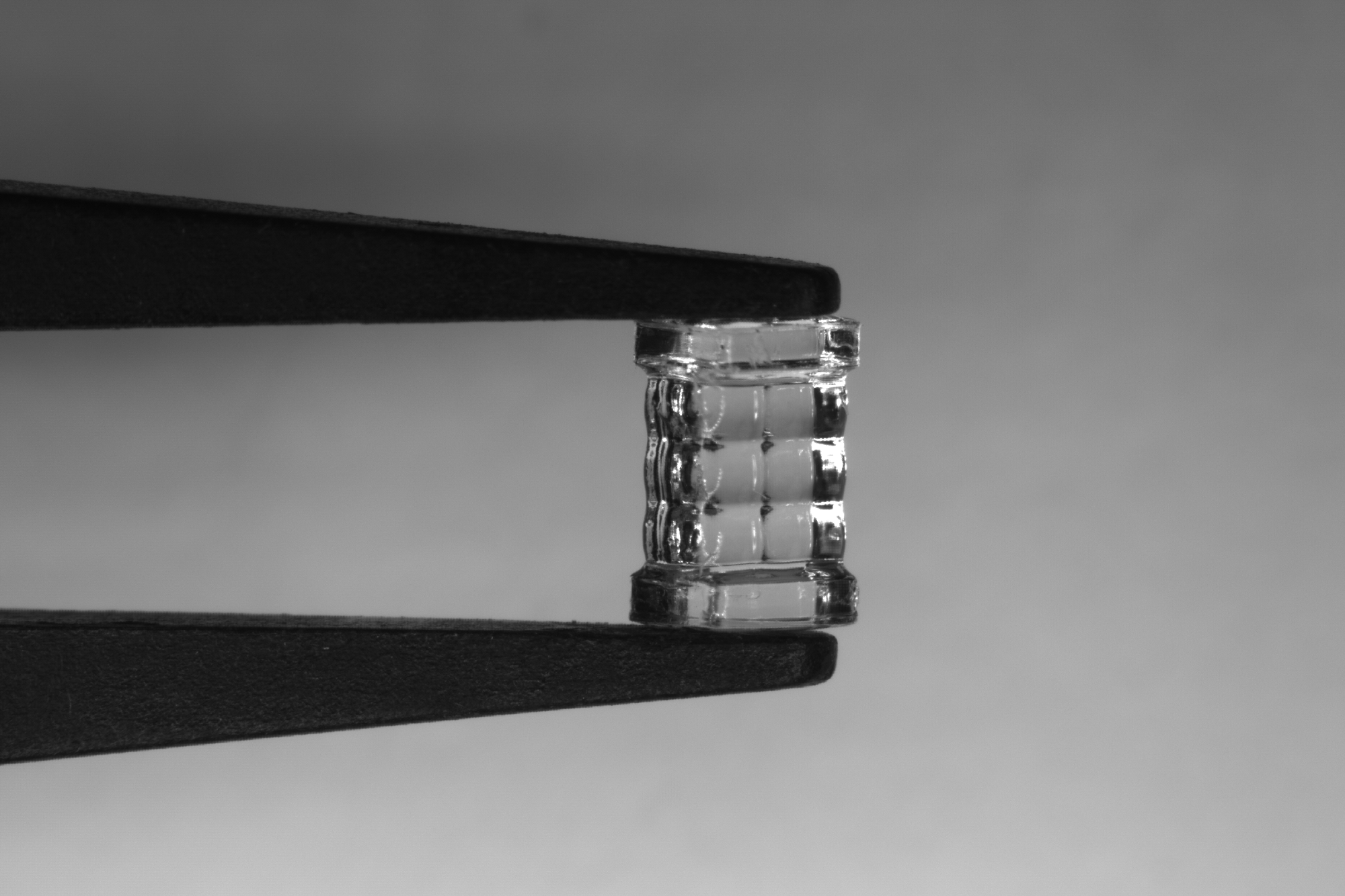Researchers in Canada have pioneered a novel 3D printing technique known as blurred tomography, enabling the swift production of microlenses with optical quality comparable to commercial standards. This innovative method has the potential to streamline and expedite the design and manufacturing process of various optical devices.
 Researchers developed a new 3D printing method called blurred tomography that can rapidly produce microlenses with commercial-level optical quality. They used the technique to print a microlens array, which is shown being held by a set of tweezers. Image Credit: Daniel Webber, National Research Council of Canada
Researchers developed a new 3D printing method called blurred tomography that can rapidly produce microlenses with commercial-level optical quality. They used the technique to print a microlens array, which is shown being held by a set of tweezers. Image Credit: Daniel Webber, National Research Council of Canada
We purposely added optical blurring to the beams of light used for this 3D printing method to manufacture precision optical components, this enables production of optically smooth surfaces.
Daniel Webber, National Research Council of Canada
Published in the journal Optica, renowned for its high-impact research, these researchers showcase the efficacy of the new method by employing it to craft a millimeter-sized plano-convex optical lens.
Remarkably, the lens exhibited imaging capabilities akin to those of a commercially available glass lens. Additionally, the researchers illustrate that this method can swiftly produce optical components ready for use in as little as 30 minutes
We anticipate this method to be valuable for cost-effective and swift prototyping of optical components due to the affordability of the tomographic 3D printer and the materials used, also, the inherent freeform nature of tomographic 3D printing could enable optical designers to simplify designs by replacing multiple standard optics with printed optics that have complex shapes.
Daniel Webber, National Research Council of Canada
Smoothing Out the Edges
Tomographic volumetric additive manufacturing is a novel manufacturing technique utilizing projected light to solidify light-sensitive resin in specific areas. This method enables printing entire parts at once without requiring support structures.
However, current tomographic methods encounter difficulties in directly printing lenses of imaging quality due to the pencil-like beams used, resulting in surface striations and ridges.
Although post-processing steps can be used to create smooth surfaces, these approaches add time and complexity, which takes away the rapid prototyping advantage associated with tomographic printing.
Fabrication of optical components is costly due to the stringent technical specifications needed for a functioning lens, as well as the complex and time-consuming process of manufacturing. Blurred tomography can be used to make freeform designs in a low-cost manner. As the technology matures, it could allow much quicker prototyping for new optical devices, which would be useful for anyone from commercial manufacturers to garage-based inventors.
Daniel Webber, National Research Council of Canada
Creating Tiny Lenses
To evaluate the new technique, the scientists first constructed a basic plano-convex lens and demonstrated that its imaging resolution was on par with that of a commercial glass lens of the same physical dimensions. In addition, it displayed a point spread function near the glass lens, sub-nanometer surface roughness, and form error on the micron scale.
Additionally, they used blurring tomography to create a 3 × 3 array of microlenses, which they then compared to an array created using traditional tomographic 3D printing. They discovered that because of the high surface roughness of the array printed using traditional methods, it was not able to image a business card,
Nevertheless, this could be accomplished with the array printed using blurred tomography. The researchers also showed how to overprint a ball lens onto an optical fiber, which was previously only achievable with the use of two-photon polymerization, an additive manufacturing method.
Currently, they are trying to increase component accuracy by integrating material characteristics into the printing process and refining the light patterning technique. Moreover, they wish to automate the printing time so that the system is reliable enough for business use.
Webber said, “Tomographic 3D printing is a rapidly maturing field that is finding use in many application areas, here, we leverage the intrinsic advantages of this 3D printing method to fabricate millimeter-sized optical components. In doing so, we have added to the repertoire of optical manufacturing techniques a rapid and low-cost alternative that could potentially have an impact in future technologies.”
Journal Reference:
Webber, D., et al. (2024) Micro-optics fabrication using blurred tomography. Optica. doi.org/10.1364/optica.519278.